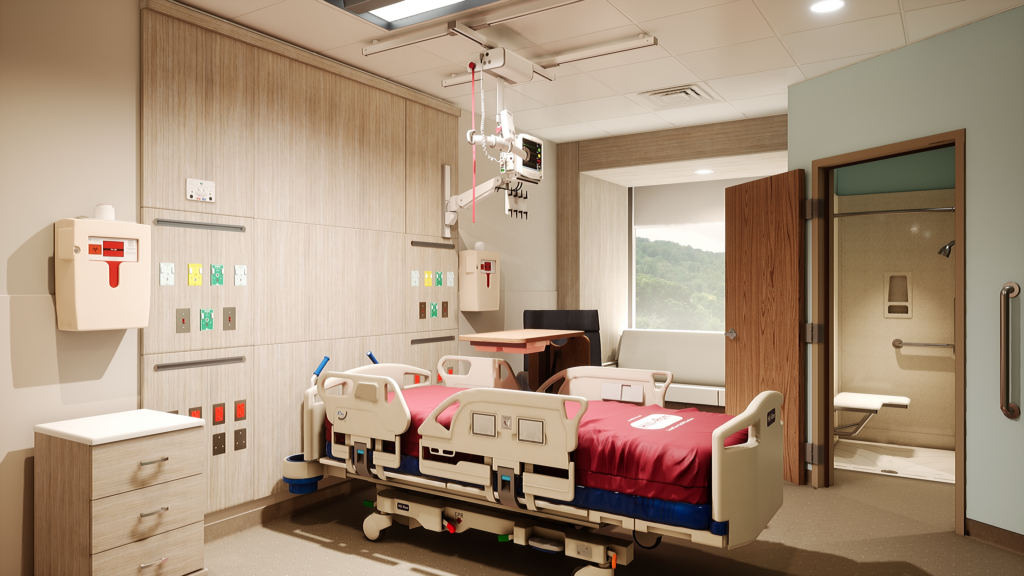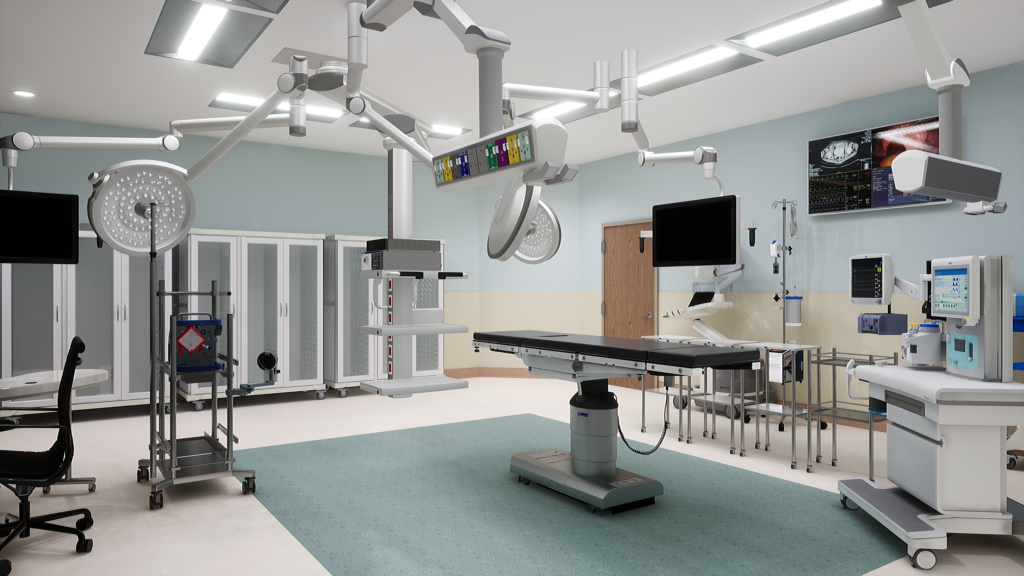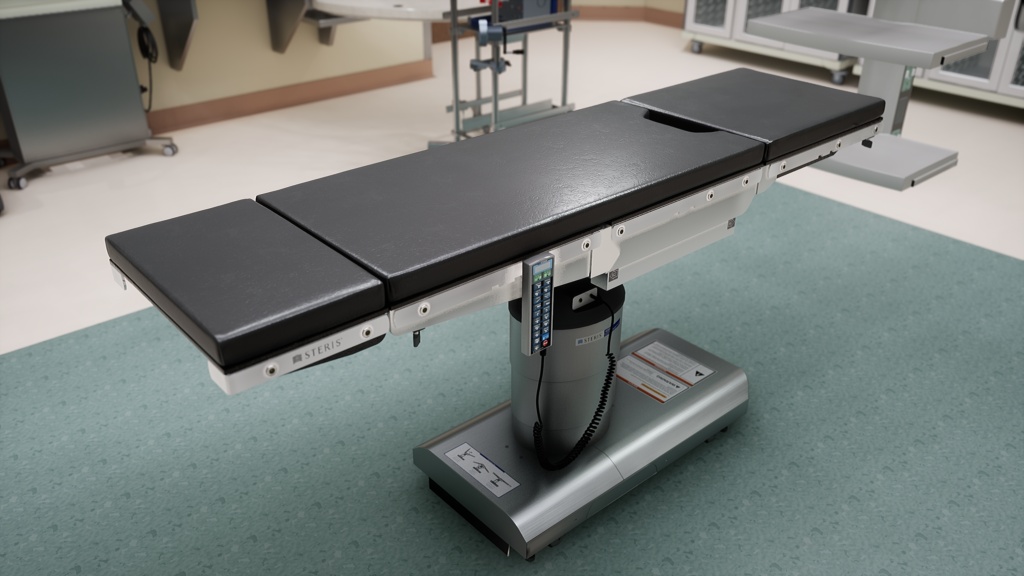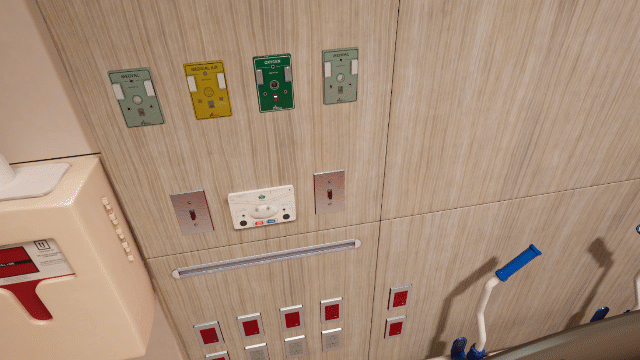Client: Robins & Morton
Company: VIATechnik
Roles: Production manager, VR developer, performance optimization, client contact
Collaborators: 3D & Environment Artists
Platforms: Unreal Engine 4, Oculus Rift-S, Oculus Quest 2, HTC Vive, Windows Mixed Reality
When Robins & Morton set out to build hospital room mockups for a new expansion to Carilion Roanoke Memorial Hospital they were determined to leverage virtual reality to drastically reduce time and costs for mockup reviews. The traditional method of creating physical mockups was costly, slow, and did not accommodate the iterative nature of design, so VIATechnik worked with Robins & Morton and the design team at Earl Swensson Associates to create a virtual mockup of several operating and patient rooms in high detail.
I directed our team in reproducing all room geometry, equipment, and furniture in high, photorealistic detail to simulate the design as realistically as possible. Participants from both the design, construction, and hospital staff teams previewed these spaces through virtual reality headsets, enabling them to visualize routine tasks, equipment layouts, and material aesthetics. I directed the project’s development through several iterations of the virtual reality mockup as the design developed, guided by the feedback gleaned from these reviews. The project team discovered that the virtual mockup reviews exceeded their expectations for design coordination, and they subsequently canceled their plans to build costly physical mockups altogether, leading to a 13x return on investment.
The project’s success was featured by ENR in an article here and I presented an overview of the project’s insights during the 2021 VRAR Association Global Summit on behalf of the AEC Committee.



To successfully replicate the physical mockup experience, the virtual mockup prioritized photorealistic graphics and dimensional precision. I directed our team to build a virtual library of custom 3D assets drawn exactly from manufacturer models, ensuring all equipment and furniture in the virtual mockup matched the exact design intent. Materials and finishes were visualized using exact material samples to achieve a high degree of visual accuracy. This gave the design team assurance of the hospital rooms’ appearance, enabling them to finalize material and finish choices.
Given the volume of required equipment and the detailed precision of the equipment models and materials, I anticipated we would need to implement performance optimization to maintain a stable framerate for VR users. I mitigated this through three primary measures: first, all equipment assets were given several LOD levels to drastically reduce polygon counts. These were fine-tuned to ensure no noticeable detail was lost. Some of the higher priority assets, like the surgical table or patient bed, were reduced by more than 50% with no discernible change. Second, material texture sizes were reduced in a similar fashion, and in most cases there was very little change in visual accuracy from 4k to 1k resolutions. Lastly, materials were grouped using the master material and instance material structure, reducing overall draw calls.
After implementing these optimization measures, the scene ran smoothly enough to work on even lower-end graphics cards like the GTX 1060, which ensured that project team members could preview the scene without worrying about their own hardware limitations.

I designed and integrated the Virtual Reality controls which featured the ability to jump seamlessly between different rooms as well as interactivity with objects to enable participants to move headwall outlets in the patient rooms. These outlets are typically connected to equipment that services the patient, so ensuring optimal placement of the outlets was a high priority. Participants in the virtual mockup review were able to evaluate the placement of these outlets relative to the patient bed and nurse’s workstation, similar to how they would be analyzed in a physical mockup review.

I developed a list of questions to ask participants after they had previewed the VR scene to gauge the effectiveness of the experience. The results were overwhelmingly positive: more than 73% of participants commented that the virtual mockup was at least equal to or better than a physical mockup, with over 54% commenting that they preferred the virtual mockup. Another interesting feedback point was the free-response general comments: more than 25% of participants had explicitly indicated they wanted more interactive elements in the scene, which gave us confidence that the immersiveness of VR was effortlessly intuitive.
Video demonstrations below show the virtual reality controls and photorealistic quality of the experience.